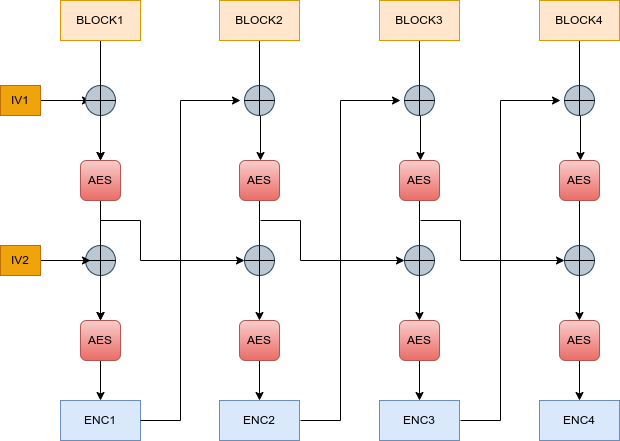Record some of my challenge-solving ideas for Securinets CTF 2022,if there are any discrepancies ,plz correct me ~.
Sherry task.py:
1 2 3 4 5 6 7 8 9 10 11 12 13 14 15 16 17 18 19 20 21 22 23 24 25 26 27 28 29 30 31 32 33 34 35 36 37 38 39 40 41 42 43 44 45 46 47 48 49 50 51 52 53 54 55 56 57 58 59 60 61 62 63 64 65 66 67 68 69 70 71 72 from sage.all import *from Crypto.Util.number import *import random, sys, jsonFLAG = "Securinets{REDACTED}" def getRandomElement (F, deg ): return F.random_element(degree=deg) def polyToList (p ): return p.list () def listToPoly (F, l ): return sum (F(c*x**i) for i, c in enumerate (l)) def polySum (p1, p2 ): if p1.parent() == p2.parent(): return p1 + p2 else : return p1 + p1.parent()(p2) def getShare (g, secret ): y = g**secret print (polyToList(y)) e = getRandomElement(PolynomialRing(GF(getPrime(256 )), "x" ), 10 ) print (e) s = polySum(y, e) share = polyToList(s) return share if __name__ == '__main__' : print (f"Welcome to Black Organization.\nTo join us, you have to guess our secret.\n" ) p = getStrongPrime(512 ) P = PolynomialRing(GF(p), "x" ) x = P.gen() N = getRandomElement(P, 10 ) Q = P.quotient_ring(N**2 ) x = Q.gen() G = Q(getRandomElement(P, 10 )) secret = random.randint(1 , p-1 ) print (secret) pub = G**secret params = {"N" : polyToList(N), "pub" : polyToList(pub), "G" : polyToList(G), "p" :p} print (f"{params} \n" ) for _ in range (5 ): try : g = eval (input ("Your guess g : " )) s = eval (input ("Your guess s : " )) g = listToPoly(Q, g) s = int (s, 16 ) % p if g**s == pub: if s != secret: print (f"Don't cheat! :)" ) continue print (f'From now, your name will be Sherry! Here is your flag : {FLAG} ' ) sys.exit() else : share = {'share' : getShare(g, secret)} print (f'{share} \n' ) except Exception as e: print (e) sys.exit()
根据 题意 分析,我们可以得到以下关系。
这道题是需要我们找到secret,并且满足
到这里我们或许会尝试 g = pub ,s = 1,但是很不幸,”Don’t cheat! :)”。
接下去我们可以发现如果给出g=a(a是一个常数),大致是可以通过HNP的手段将a ^ secret % p恢复出来,可是这里就出现问题了,我恢复出来了a ^ secret % p,但是p是一个strongPrime,那么我们没有办法求得他的阶,很遗憾,Failed。
再想想,如果secret是一个奇数,我给出g=N+1,他返回的是
接着回代即可。
AES^2^ task.py:
1 2 3 4 5 6 7 8 9 10 11 12 13 14 15 16 17 18 19 20 21 22 23 24 25 26 27 28 29 30 31 32 33 34 35 36 37 38 39 40 41 42 43 44 45 46 47 48 49 50 51 52 53 54 55 56 57 from Crypto.Cipher import AESfrom Crypto.Util.Padding import padimport os, sys, hashlib, randomFLAG = b"Securinets{REDACTED}" key, iv1, iv2 = [os.urandom(16 ) for _ in range (3 )] def xor (a, b ): return bytes (i ^ j for i, j in zip (a, b)) def get_token (msg, iv1, iv2 ): if len (msg) % 16 != 0 : msg = pad(msg, 16 ) aes = AES.new(key, AES.MODE_ECB) blocks = [msg[i:i+16 ] for i in range (0 , len (msg), 16 )] enc = b"" tmp1 = iv1 tmp2 = iv2 for block in blocks: tmp = aes.encrypt(xor(block, tmp1)) _tmp = aes.encrypt(xor(tmp, tmp2)) enc += _tmp tmp1 = _tmp tmp2 = tmp return enc def proof (msg ): res = b"\x00" *16 for i in range (0 , len (msg), 16 ): res = xor(res, msg[i:i+16 ]) return hashlib.sha256(res).digest() if __name__ == "__main__" : alice_username = os.urandom(32 ) alice_token = get_token(alice_username, iv1, iv2) print (f"Alice's creds : {alice_username.hex ()} -> {alice_token.hex ()} \n" ) while True : try : username = bytes .fromhex(input ("Username : " )) token = get_token(username, iv1, iv2) print (f"Your creds : {username.hex ()} -> {token.hex ()} " ) if proof(token) == proof(alice_token): if token == alice_token: print (f"You are not Alice!" ) sys.exit() else : print (f"Hey Alice! Here is your flag {FLAG} " ) sys.exit() else : print ("Try again!\n" ) except Exception as e: print (e) print ("Invalid input.\n" )
分析题目中需要得到proof(Aliceusername) == proof(myusername),而这里他proof部分使用的是xor,其中我们可以想到如果是有长度限制的话很容易想到去交换enc1和enc2的位置去得到,但是目前我认为并没有办法做下去。
但是该题没有长度限制,我们想它既然是xor,的那么我只需要让后面加2块(maybe more?)去使得他能够得到的enc3^enc4=0即可。
在这里我们可以发现BLOCK和ENC是可控的,即可以做到CPA。
在第二块以后的IV1部分我们也是可以控制其第一次AES之前的值,但是AES之后我们就不可知,只有ENC2之后是可知的。
2次AES之间存在一个XOR IV2,我们可以发现他与这块使用的IV2无关,只与上一块前半部分AES有关,那么可以控制后面只需要使得ENC3和ENC4相等即可,往回推,如果可以使得BLOCK2和BLOCK3第一次AES后相同即可,而这里我们发现他AES之前使用的异或值我们都是可知的,那么ENC1 ^ BLOCK2=ENC2 ^ BLOCK3即可做到在ENC3和ENC4部分对于前一次AES用于异或的值相同。那么接下来只需要第一次AES前输入的值相同即可得到ENC3==ENC4,与第二块和第二块相同分析,使得ENC3 ^ BLOCK4 = ENC2 ^ BLOCK3 = ENC1 ^ BLOCK2
:=> BLOCK3 = ENC1 ^ BLOCK2 ^ ENC2 ; BLOCK4 = ENC1 ^ BLOCK2 ^ ENC3 ;
这样就可以做到成功伪造。
Well 只要跟着题目的流程走即可得到同构下的key是相同的。
